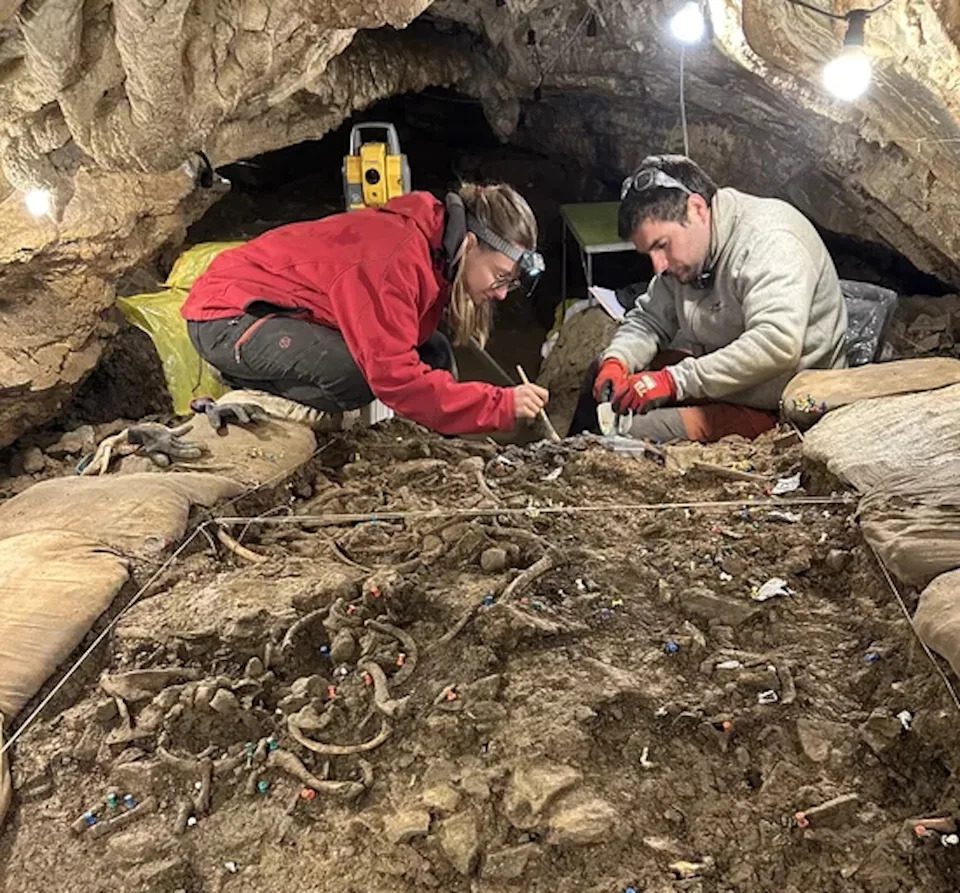Grisly, 4,000-year-old forensic proof present in a cave within the Pyrenees Mountains hints at a severe disagreement between members of the area’s first shepherds. In keeping with archaeologists on the Catalan Institute of Human Paleoecology and Social Evolution (CERCA) and Spain’s Universitat Autònoma de Barcelona, a flint arrowhead embedded in a human rib bone on the prehistoric tomb signifies a case of foul play. However regardless of the extreme harm, further indicators reveal the wound wasn’t essentially deadly– at the least not instantly.
Archaeologists uncovered the rib and its accompanying arrowhead on the Roc de les Orenetes archaeological website. Positioned 79 miles north of Barcelona at an altitude of over 5,900 toes, Roc de les Orenetes was first found within the late Nineteen Sixties. Researchers have spent the final six years combing by way of the exceptional trove of historic skeletal stays within the mountains of Catalan. Thus far, the venture has yielded greater than 6,000 bone fragments from over 60 people, primarily grownup males. Nonetheless, the grave website wasn’t utilized by only one or two generations. As a substitute, native herders interred their deceased within the cave over two or three centuries.
Earlier bone evaluation confirmed the Pyrenean neighborhood was nicely tailored to their surroundings, with robust skeletal buildings, noticeable muscular insertions, and proof of strenuous bodily exercise. Specialists imagine these indicators are all indicative of a tradition tied to grazing and high-altitude useful resource cultivation.
Archaeologists have excavated over 6,000 bone fragments from Roc de les Orenetes. Credit score: IPHES-CERCA
However as CERCA defined, further examinations of the bones additionally highlighted vital trauma, together with reduce marks from axes and daggers and intentional fractures. The close by arrowheads additional suggests proof of altercations, however there’s nonetheless a chance that neighborhood members merely buried the gadgets with the deceased throughout funereal rites.
Their most up-to-date discover all-but-dispells the extra optimistic funeral concept. In keeping with the workforce, excavators have positioned a flint arrowhead an identical to the others in Roc de les Orenetes, this time, embedded in a rib fragment. Though the entry angle reveals that the sufferer was shot by way of the again, it seems they survived the assault— at the least for just a little bit.
“Contemplating the place and trajectory of the arrow, it might have killed the individual at two moments: both for the time being of impression, attributable to bleeding or lung harm (for instance, a pneumothorax), or shortly afterward, attributable to an infection,” excavation director Carlos Tornero stated in an announcement.
Tornero added that if the shot was clear and the sufferer managed to combat off any ensuing infections, it’s doable they survived the encounter solely. On condition that the bone regenerated across the arrowhead, the latter end result appears much more believable. Tornero and colleagues plan to conduct extra analyses of their discover to doubtlessly verify the person’s reason behind loss of life, in addition to be taught extra concerning the assault itself.
“Now we are able to examine the pressure of the impression, the kind of weapon used, and the place of the attacker and the sufferer,” added collaborator Miguel Ángel Moreno.
Mixed with ongoing excavations and lab work, archaeologists like Tornero and Moreno hope to raised contextualize how the southern European communities within the third millennium BCE lived with each other. And as their new discovery graphically reveals, how they often fought.


